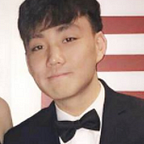On theory vs. practice and starting with an end goal
“He who loves practice without theory is like the sailor who boards ship without a rudder and compass and never knows where he may cast.”
-Leonardo da Vinci
If you have no direction or a clear goal set for the future, you’re more than likely to feel lost. You won’t know why you’re putting your efforts into something and will feel unmotivated. The crucial question you have to answer is:
“What’s the point of this?”
You can learn all the technical skills you want. You can learn all the theories and understand the concept down to the core. But what’s the point if you don’t know what to do with it?
For example, I was taking an online course about digital marketing today. I was watching videos and answering questions, and progressing fairly quickly through the course. I understood the concepts and general idea of what digital marketing was all about. It was interesting to me, but I was missing the point.
They’re not putting the knowledge out there for the sake of knowing. What’s the point of knowledge if there isn’t application? There is a huge difference between theory vs. practice. Theory assumes an outcome, while practice allows you to test the theory and see if it is accurate.
I came out of the course knowing more about digital marketing… but did I actually put my knowledge into practice? Did I attempt to find a job that tests my knowledge and allows me to practice my skills?
To fully put my new found knowledge to use, I should apply it and test for failure or success. The thing about trial by fire on the digital world is that there are usually not many repercussions. There are countless resources that offer their services for free, and the only thing you have to sacrifice is your time and effort.
When you learn something, think about the end goal in mind. Think about the big picture, and how it will apply to your life. Learning isn’t about memorization and definition. I’ve realized that learning gets more interesting when you can apply it to real life.
Textbooks are boring, but when you see the information transfer from the books into the real world, it’s way more exciting. For exmaple, learning about the specificities and jargon of coding is hard and tedious, but when you’re actually creating software or web applications with your knowledge, it gets way more stimulating.
My problem when starting to learn how to code was that I didn’t have an end goal in mind. I learned for the sake of knowledge… maybe just to show that I was smart and was able to learn coding. I had no vision of what I wanted to do with the knowledge, so eventually my curiosity peaked.
You can only work on tutorials for so long before you need to start creating on your own. You need to transfer your knowledge into the real world, and apply what you’ve learned.
My mentor told me one thing that changed my perspective of coding. He told me that he learns coding as a means to an end. I think it’s called just-in-time learning. Instead of trying to understand every bit of computer science and coding before starting to build something, you should start with basic knowledge.
You should understand the fundamentals, so that you can start. Then, when you hit a road block, you can figure out what you need to learn and learn it just-in-time. I find this a very efficient way of learning and practicing simultaneously.
I’m not saying you shouldn’t learn for the sake of learning either. Not everything needs to be put in practice, but my main point is to say that learning becomes easier if you have something you want to create. It allows you to break down your learning process and eases the mental strain you put on yourself when you want to achieve that end result.
This post was also inspired by one of the habits in Stephen Covey’s book: The 7 Habits of Highly Effective People. He says to begin with the end in mind.
“…is based on imagination — the ability to envision in your mind what you cannot at present see with your eyes. It is based on the principle that all things are created twice. There is a mental (first) creation, and a physical (second) creation.
The physical creation follows the mental, just as a building follows a blueprint. If you don’t make a conscious effort to visualize who you are and what you want in life, then you empower other people and circumstances to shape you and your life by default.”
-Stephen Covey
Imagine the end goal in your head, and create it in real life. The latter cannot exist without the former. How can you create something that you can’t imagine?
Practice applying what you learned. Put theory to practice. Be prepared to fail and to find unexpected results, but understand that they will all be learning experiences. Practice trumps theory.
“In theory there is no difference between theory and practice. In practice there is.”
-Yogi Berra
